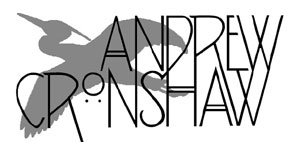
- Andrew Cronshaw website -
- Andrew Cronshaw MySpace -
- Cloud Valley Music website -
- Andrew Cronshaw website -
- Andrew Cronshaw MySpace -
- Back to Reviews Introduction page -
Written in
Folk Roots
issue 66, 1988
RAKOTOZAFY
Valiha Malaza - Famous Valiha
Globestyle ORBD 028 (1988)
RAKOTOFRA (PHILIBERT RABEZAZA) & GROUP
Flute Master Of Madagascar
Globestyle ORBD 027 (1988)
Jo Shinner's article in F.R. 64 covered some of the background to the
musicians on these two albums, numbers three and four in Globestyle's
Madagasikara series.
Rakotozafy, who died at the end of the '60s,
played valiha vato, an arched, garden-cloche shaped sheet metal version of the
box-like 'suitcase zither' marovany which has developed alongside the
long-established cylindrical bamboo form of Madagascar's tube zither, the
valiha. He made a series of recordings for the Malagasy label DiscoMad around
1960 which made him famous on the island. This album is a compilation of
fourteen of them, showing a skipping, rippling style of music which evokes
comparisons with the Paraguayan harp, kora, mbira and scampering African
guitars. The melodic and chordal structures wouldn't sound out of place in Latin
America, and his playing has a lot to inspire guitarists.
Vocals are interjected by Rakotozafy himself, his
wife, and his ill-fated son Marc, whose agile rattle-playing adds a driving
rhythmic energy to most tracks and whose singing is particularly appealing.
Ny Fitiovana Rcha Voo Miaraka (Love Is Like Two Rivers That Flow Into One)
is probably the most dazzling track with at least two melodic parts
intertwining; if investigating, try starting here.
Rakotofra plays the sodina, a metal flute
end-blown like the Balkan kaval. He came to Britain last year with other
Malagasy musicians; these recordings were made by Ben Mandelson and Roger
Armstrong, visiting Madagascar with help from the national airline. His music,
connected with the hira gasy theatrical shows and famadihana ancestor-homage
ceremonies, has, like Rakotozafy's, a Latin feel, which is intensified by the
pan-pipe-like sound and the use of the kabosy, a small strummed guitar sounding
something like a charango. Even the drums, European military rather than African
in form, contribute to the Iberian accent, though in fact they are a relic of
Madagascar's period as a French colony.
Recordings like these are 'of' the musician,
rather than 'by'; the music is for the moment, whereas the record is for the
living room or whatever. As such, the Rakotozafy recordings are probably the
more likely to be played, but Rakotofra's music is full of energy and ideas, and
both are parts of a living tradition until now little known in the West.
© 1988
Andrew Cronshaw
You're welcome to quote from reviews on this site, but please credit the writer
and fRoots.
Links:
fRoots - The feature and
review-packed UK-based monthly world roots music magazine in which these reviews
were published, and by whose permission they're reproduced here.
It's not practical to give, and keep up to date,
current contact details and sales sources for all the artists and labels in
these reviews, but try Googling for them, and where possible buy direct from the
artists.
CDRoots.com in the USA, run by
Cliff Furnald, is a reliable and independent online retail source, with reviews,
of many of the CDs in these reviews; it's connected to his excellent online magazine
Rootsworld.com
For more reviews click on the regions below
NORDIC
BALTIC
IBERIA (& islands)
CENTRAL & EASTERN EUROPE, & CAUCASUS
OTHER EUROPEAN AMERICAS OTHER, AND WORLD IN GENERAL
- Back to Reviews Introduction page -